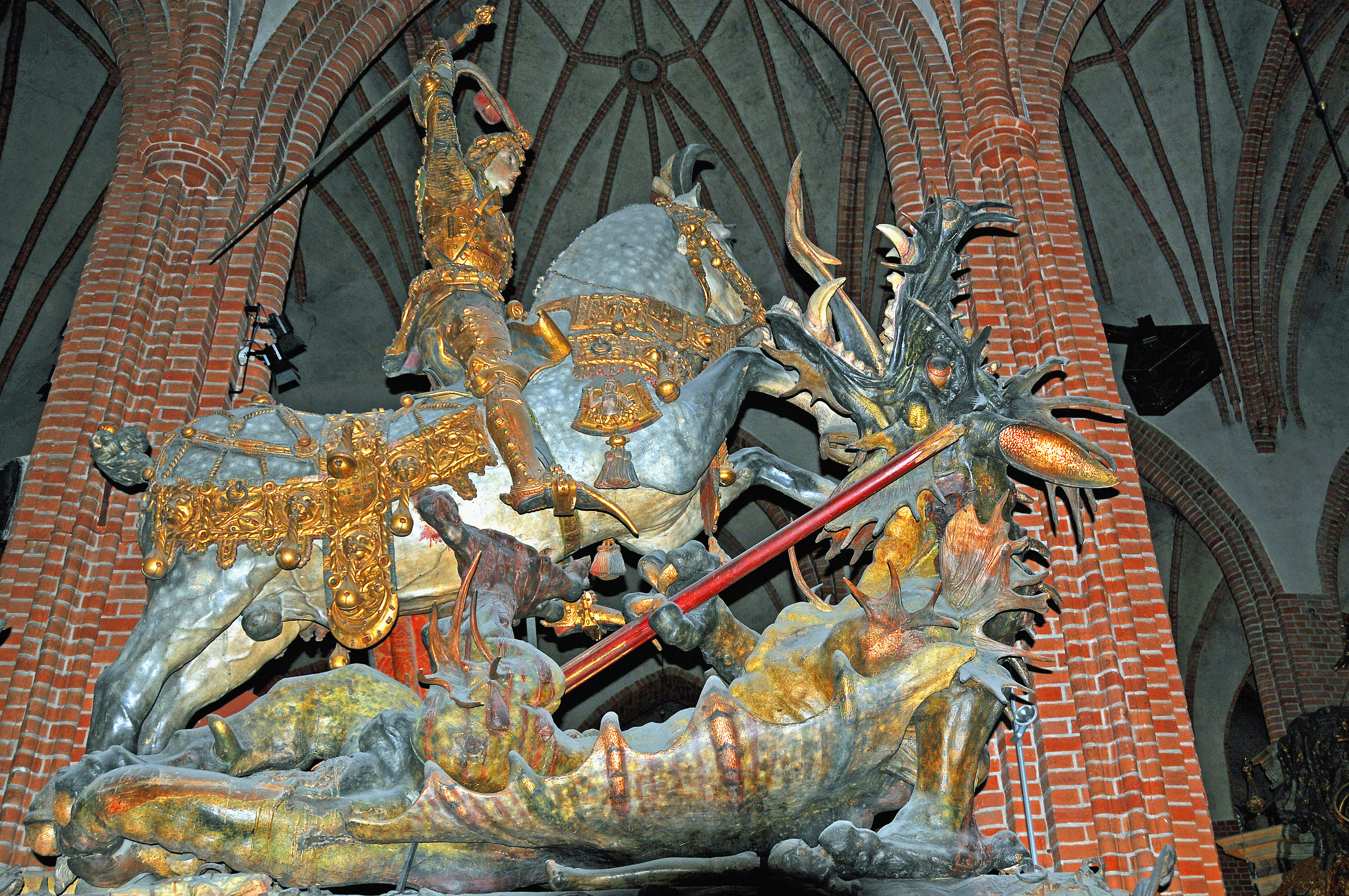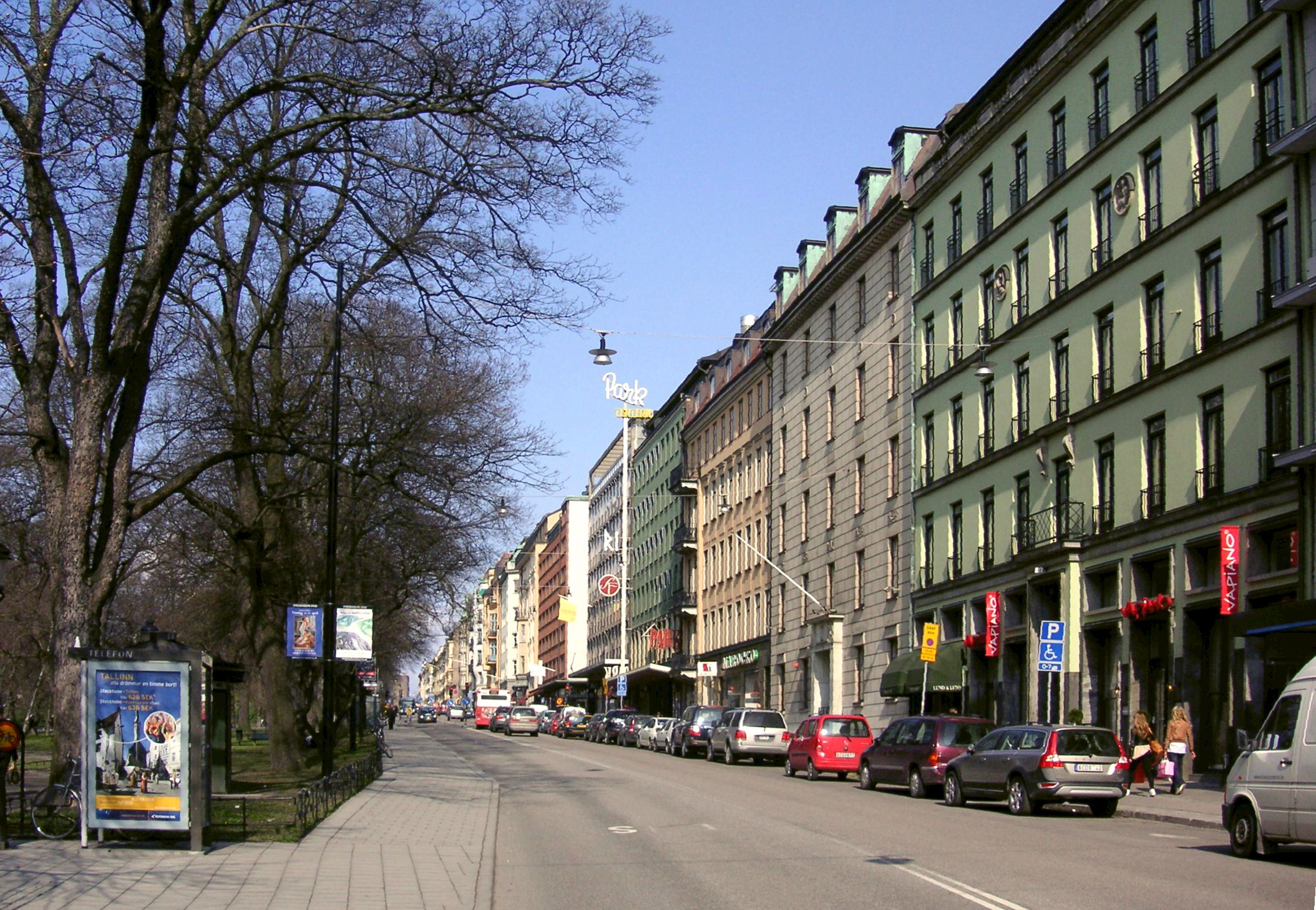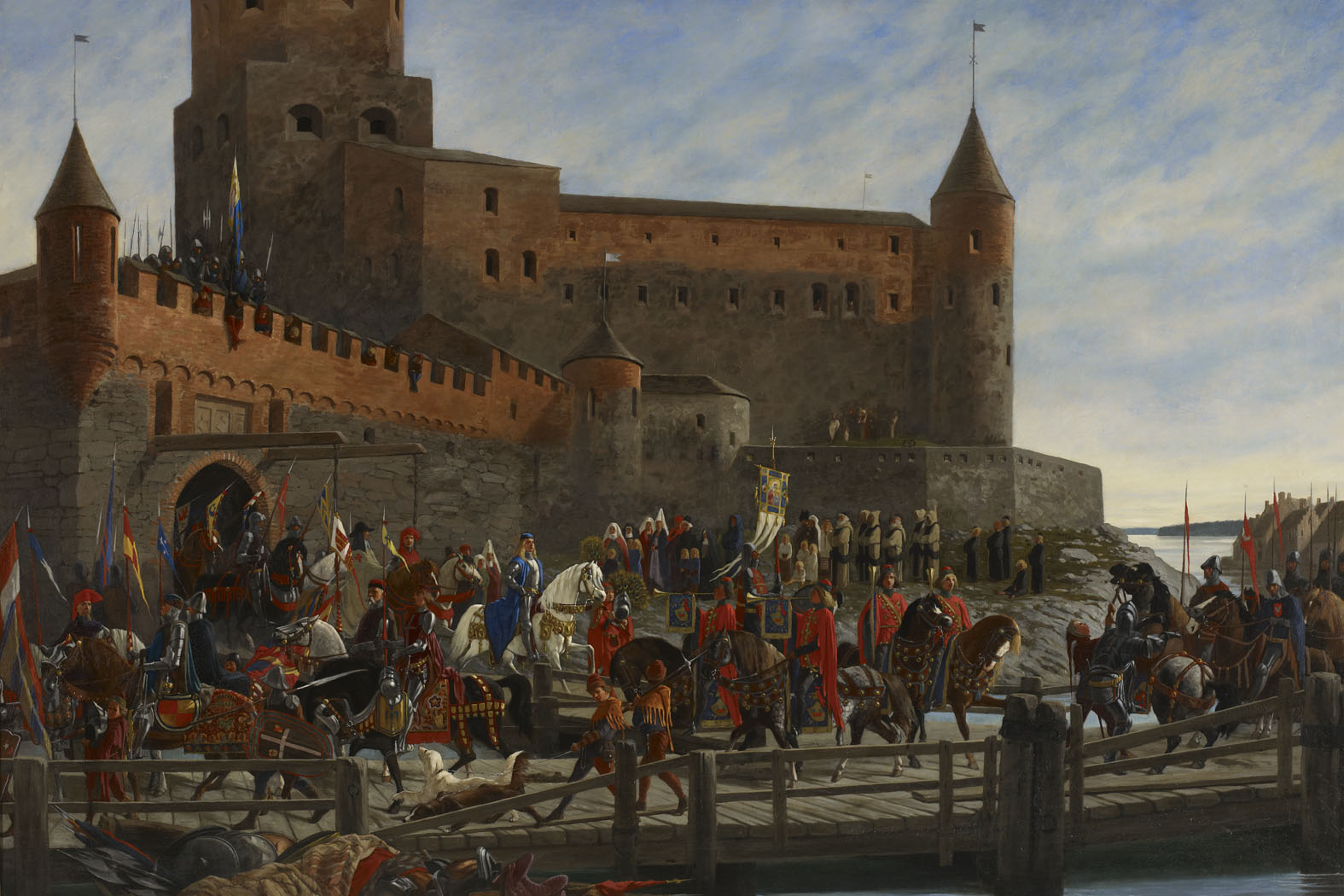|
Sture
Sture () was a name borne by three distinct but interrelated noble families in Sweden in the Late Middle Ages and Early Modern Period. It was originally a nickname, meaning 'haughty, proud' (compare the Swedish word ''stursk'' and the Old Norse and Icelandic personal name ''Sturla''), but later became a surname. Particularly famous are the three regents ( sv, riksföreståndare) from these families who ruled Sweden in succession during the fifty-year period between 1470 and 1520, namely: * Sten Sture the Elder, regent 1470–1497 and 1501–1503 * Svante Nilsson, regent 1504–1512 * Sten Sture the Younger, regent 1512–1520 The Sture families are remembered in the names of Sturegatan ('Sture Street') and Stureplan ('Sture Square') in central Stockholm, and by the in Uppsala, as well as , which is produced by a dairy in Sävsjö, close to the main seat of the 'Younger Sture' family at . Sture (Sjöblad) Family The first Sture line to emerge is known in Swedish historio ... [...More Info...] [...Related Items...] OR: [Wikipedia] [Google] [Baidu] |
Sten Sture The Elder
Sten Sture the Elder ( sv, Sten Sture den äldre; 1440 – 14 December 1503) was a Swedish statesman and regent of Sweden from 1470–1497 and 1501–1503. As the leader of the victorious Swedish separatist forces against the royal unionist forces during the Battle of Brunkeberg in 1471, he weakened the Kalmar Union considerably and became the effective ruler of Sweden as Lord Regent for most of his remaining life. Background In contemporary sources he is alternatively referred to as ''Sten Gustavsson'' or ''Herr Sten'' ''(Lord Sten)''; the practice of using noble family names as part of a personal name was not yet in use in Sweden at the time. He was born around 1440, the son of Gustav Anundsson of the Sture family and Birgitta Stensdotter Bielke, half-sister of the future Charles VIII. The Sture family was one of the high-ranking noble families of the time, though only distantly related to the royal house; his closest royal ancestor was King Sverker II of Sweden (both th ... [...More Info...] [...Related Items...] OR: [Wikipedia] [Google] [Baidu] |
Sten Sture The Younger
Sten Sture the Younger ( sv, Sten Sture den yngre) (1493 – 3 February 1520), was a Swedish nobleman who served as the regent of Sweden, during the era of the Kalmar Union. Biography Sture was born in 1493, as the son of Svante Nilsson (regent of Sweden) and Iliana Gisladotter Gädda, heiress of Ulvåsa. At the death of his father, regent Svante, Sture was only 18 years old. High Councillor Eric Trolle was chosen as regent by the High Council. He supported the union with Denmark. However, Sture utilized the castles and troops fiefed to him by his late father and executed a coup. After Sture promised to continue union negotiations with Denmark, the High Council accepted him as regent replacing Eric Trolle. In reality, Sture's purpose was to keep Sweden independent from Denmark. He adopted the Sture surname, heritage from his great-grandmother, because it symbolized independence from Denmark and as a reminder of Sten Sture the Elder, his father's third cousin. Conflict so ... [...More Info...] [...Related Items...] OR: [Wikipedia] [Google] [Baidu] |
Svante Nilsson (regent Of Sweden)
Svante Nilsson ( 1460 – 2 January 1512) was a Swedish nobleman and regent of Sweden from 1504 – 2 January 1512. He was the father of Sten Sture the Younger (1493–1520) who later served as regent of Sweden, during the era of the Kalmar Union. Biography Svante was born at Penningby Castle (''Penningby slott''), at Norrtälje in Uppland, the son of Nils Bosson Sture (ca 1426-1494). Nils belonged to the Natt och Dag dynasty, but took the surname Sture from his maternal grandfather . Svante himself never himself used the surname Sture, but his son Sten later adopted it in order to associate himself with the memory of Sten Sture the Elder (who, confusingly, was unrelated to Sven Sture but was nevertheless a distant cousin of Svante's through the Natt och Dag line). Svante's mother was Birgitta Tordsdotter Bonde (1439-1494), a member of the Bonde family and cousin of King Karl VIII. Svante became a member of the Privy Council of Sweden no later than 1482, but acte ... [...More Info...] [...Related Items...] OR: [Wikipedia] [Google] [Baidu] |
Battle Of Brunkeberg
The Battle of Brunkeberg was fought on 10 October 1471 between the Swedish regent Sten Sture the Elder and forces led by Danish king Christian I. Sture won a decisive victory. Background In May 1471, Sten Sture the Elder had been elected as Lord Protector of Sweden by the Riksmöte in Arboga. Advocating Swedish secession from the Kalmar Union, ''Herr Sten'' as he was known, had garnered large support. In particular his followers were to be found among the peasantry, in Stockholm and in the Bergslagen mining region. The latter region's trading with German cities such as Lübeck often found themselves in conflict with Union's Danish foreign policy. In later times the battle was often recast for propaganda reasons as a national war of liberation against Danish oppressors. In reality, most combatants on both sides were Swedish and the roots of the conflict were primarily economic and political interests. In response to the election of Sture, Christian I sailed to Sweden with a ... [...More Info...] [...Related Items...] OR: [Wikipedia] [Google] [Baidu] |
Stureplan
Stureplan is a public square in central Stockholm, between Norrmalm and Östermalm. The square connects the major streets Kungsgatan, Birger Jarlsgatan and Sturegatan. The buildings around the square house offices of banks and other financial institutions, as well as several corporate headquarters. Some of the country's most famous and expensive restaurants and bars are located in the area around Stureplan. Some examples are Sturehof, Spy Bar, Riche, Laroy, Hell's Kitchen, East and Sturecompagniet. Shops in the area include Versace, Hugo Boss, Gucci, and LV. In Sweden, Stureplan has also become a well-known symbol for exclusivity since the major refurbishments during the 1980s. Known as an area with many expensive, luxurious bars and restaurants, it is considered a playground for upper-class youth, celebrities, young business executives and some of the Swedish Royal Family. All the while, among average Stockholmers it is typically thought of as a swanky and elitist plac ... [...More Info...] [...Related Items...] OR: [Wikipedia] [Google] [Baidu] |
Sturegatan
Sturegatan is a street in the borough of Östermalm in Stockholm Stockholm () is the Capital city, capital and List of urban areas in Sweden by population, largest city of Sweden as well as the List of urban areas in the Nordic countries, largest urban area in Scandinavia. Approximately 980,000 people liv .... References Streets in Stockholm [...More Info...] [...Related Items...] OR: [Wikipedia] [Google] [Baidu] |
Charles VIII Of Sweden
Charles VIII ( sv, Karl; 1408–1470), contemporaneously known as Charles II and called Charles I in Norwegian context, was king of Sweden (1448–1457, 1464–1465 and 1467–1470) and king of Norway (1449–1450). Regnal name Charles was the second Swedish king by the name of Charles (Karl). ''Charles VIII'' is a posthumous invention, counting backwards from Charles IX (r. 1604–1611) who adopted his numeral according to a fictitious history of Sweden. Six others before Charles VII are unknown to any sources before Johannes Magnus's 16th century book ', and are considered his invention. Charles was the first Swedish monarch of the name to actually use a regnal number as ''Charles II'' (later retrospectively renumbered VIII), on his wife's tombstone (1451) at Vadstena. Early life Karl Knutsson was born in October 1408 or 1409, at Ekholmen Castle, the son of Knut Tordsson ( Bonde), knight and member of the privy council (''riksråd''), and Margareta Karlsdotter (Sparre av ... [...More Info...] [...Related Items...] OR: [Wikipedia] [Google] [Baidu] |
Sweden
Sweden, ; fi, Ruotsi; fit, Ruotti; se, Ruoŧŧa; smj, Svierik; sje, Sverji; sju, Sverje; sma, Sveerje or ; yi, שוועדן, Shvedn; rmu, Svedikko; rmf, Sveittiko. formally the Kingdom of Sweden, is a Nordic countries, Nordic country located on the Scandinavian Peninsula in Northern Europe. It borders Norway to the west and north, and Finland to the east. At , Sweden is the largest Nordic country and the List of European countries by area, fifth-largest country in Europe. The Capital city, capital and largest city is Stockholm. Sweden has a population of 10.5 million, and a low population density of ; around 87% of Swedes reside in urban areas in the central and southern half of the country. Sweden’s urban areas together cover 1.5% of its land area. Because the country is so long, ranging from 55th parallel north, 55°N to 69th parallel north, 69°N, the climate of Sweden is diverse. Sweden has been inhabited since Prehistoric Sweden, prehistoric times, . T ... [...More Info...] [...Related Items...] OR: [Wikipedia] [Google] [Baidu] |
The Three Lords Sture (J
''The'' () is a grammatical article in English, denoting persons or things that are already or about to be mentioned, under discussion, implied or otherwise presumed familiar to listeners, readers, or speakers. It is the definite article in English. ''The'' is the most frequently used word in the English language; studies and analyses of texts have found it to account for seven percent of all printed English-language words. It is derived from gendered articles in Old English which combined in Middle English and now has a single form used with nouns of any gender. The word can be used with both singular and plural nouns, and with a noun that starts with any letter. This is different from many other languages, which have different forms of the definite article for different genders or numbers. Pronunciation In most dialects, "the" is pronounced as (with the voiced dental fricative followed by a schwa) when followed by a consonant sound, and as (homophone of the archaic p ... [...More Info...] [...Related Items...] OR: [Wikipedia] [Google] [Baidu] |
Västergötland
Västergötland (), also known as West Gothland or the Latinized version Westrogothia in older literature, is one of the 25 traditional non-administrative provinces of Sweden (''landskap'' in Swedish), situated in the southwest of Sweden. Västergötland is home to Gothenburg, the second largest city in Sweden, which is situated along a short stretch of the Kattegat strait. The province is bordered by Bohuslän, Dalsland, Värmland, Närke, Östergötland, Småland and Halland, as well as the two largest Swedish lakes Vänern and Vättern. Victoria, Crown Princess of Sweden is Duchess of Västergötland. Administration The provinces of Sweden serve no administrative function. Instead, that function is served by counties of Sweden. From the 17th century up until 31 December 1997, Västergötland was divided into Skaraborg County, Älvsborg County and a minor part of Gothenburg and Bohus County. From 1 January 1998 nearly all of the province is in the newly created ... [...More Info...] [...Related Items...] OR: [Wikipedia] [Google] [Baidu] |
Birger, King Of Sweden
Birger (Swedish: ''Birger Magnusson''; 1280 – 31 May 1321) was King of Sweden from 1290 to 1318. Background Birger was the son of King Magnus III of Sweden and Hedwig of Holstein. He was hailed king of Sweden when he was four years old. This was done by his father in order to secure the succession. In 1275, King Magnus had led a rebellion against his elder brother, King Valdemar, and ousted him from the throne. Before his death, King Magnus ordered his kinsman, Torkel Knutsson, the Constable of the Realm, to be the guardian of his son Birger. In 1302, Birger was crowned at Söderköping after marrying Martha of Denmark, the daughter of King Eric V of Denmark. Reign Birger was only ten years old when his father died, at which time Torkel Knutsson was the most influential statesman in Sweden. In 1293, Torkel Knutsson led the Swedes to a victory which won a part of western Karelia. This expedition has traditionally been dubbed as the Third Swedish Crusade. When Torkel Knutsson ... [...More Info...] [...Related Items...] OR: [Wikipedia] [Google] [Baidu] |
Seeblatt
(, German for 'lake leaf', plural '; da, søblad; fy, pompeblêd; East Frisian: Pupkeblad) is the term for the stylized leaf of a water lily, used as a charge in heraldry. Background This charge is used in the heraldry of Germany, the Netherlands and Scandinavia, but not so much in France and Britain. Seeblätter feature prominently on the coat of arms of Denmark as well as on Danish coins. In West Frisian, the term ''pompeblêd'' is used. The name is used to indicate the seven red lily leaf-shaped blades on the Frisian flag. The seven red ''pompeblêden'' (leaves of the yellow water lily and the European white waterlily) refer to the medieval Frisian 'sea districts': more or less autonomous regions along the Southern North Sea coast from the city of Alkmaar to the Weser River. There never have been exactly seven of these administrative units, the number of seven bears the suggestion of 'a lot'. Late medieval sources identify seven Frisian districts, though with different ... [...More Info...] [...Related Items...] OR: [Wikipedia] [Google] [Baidu] |
.jpg)




.png)

.jpg)